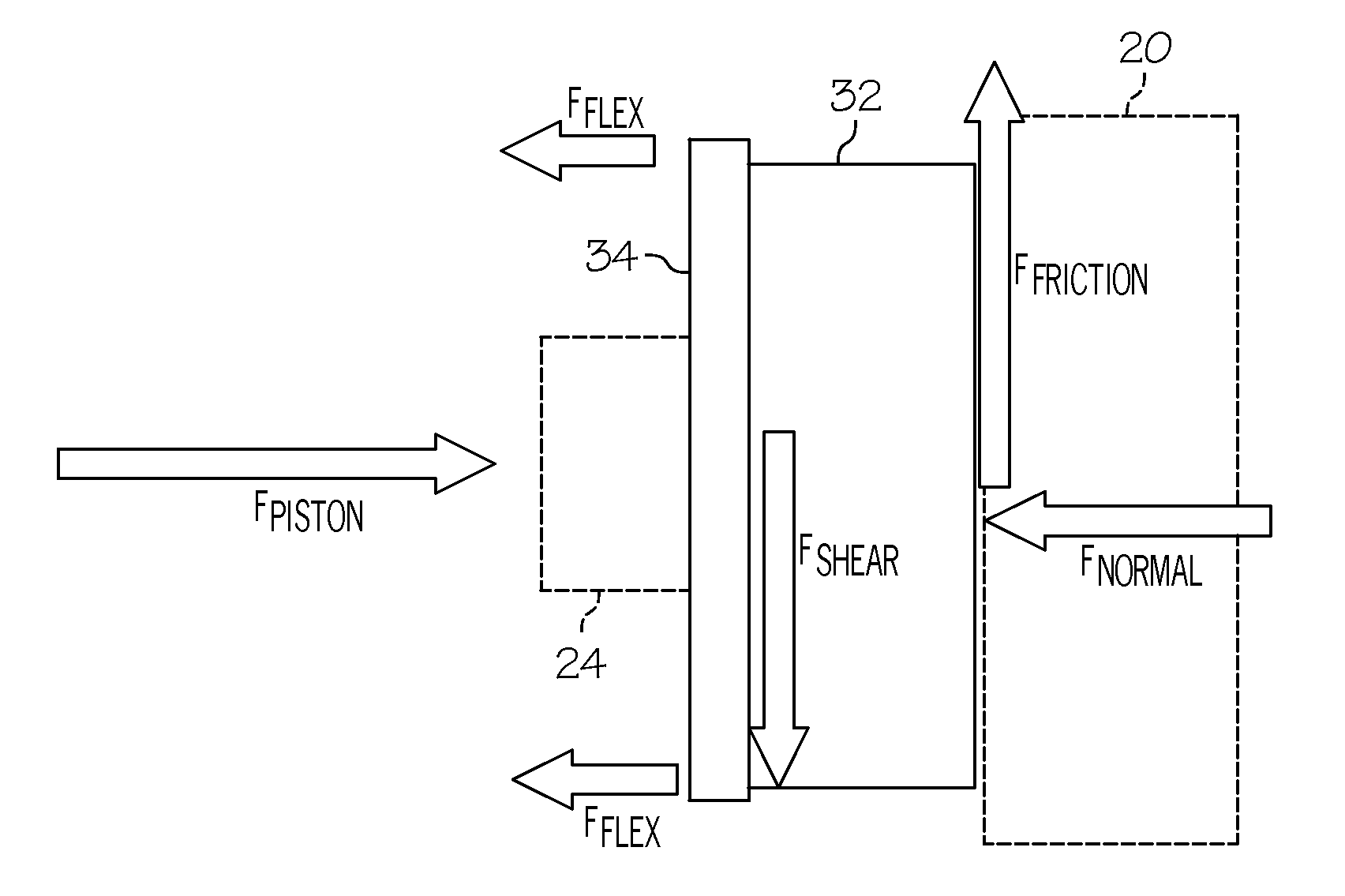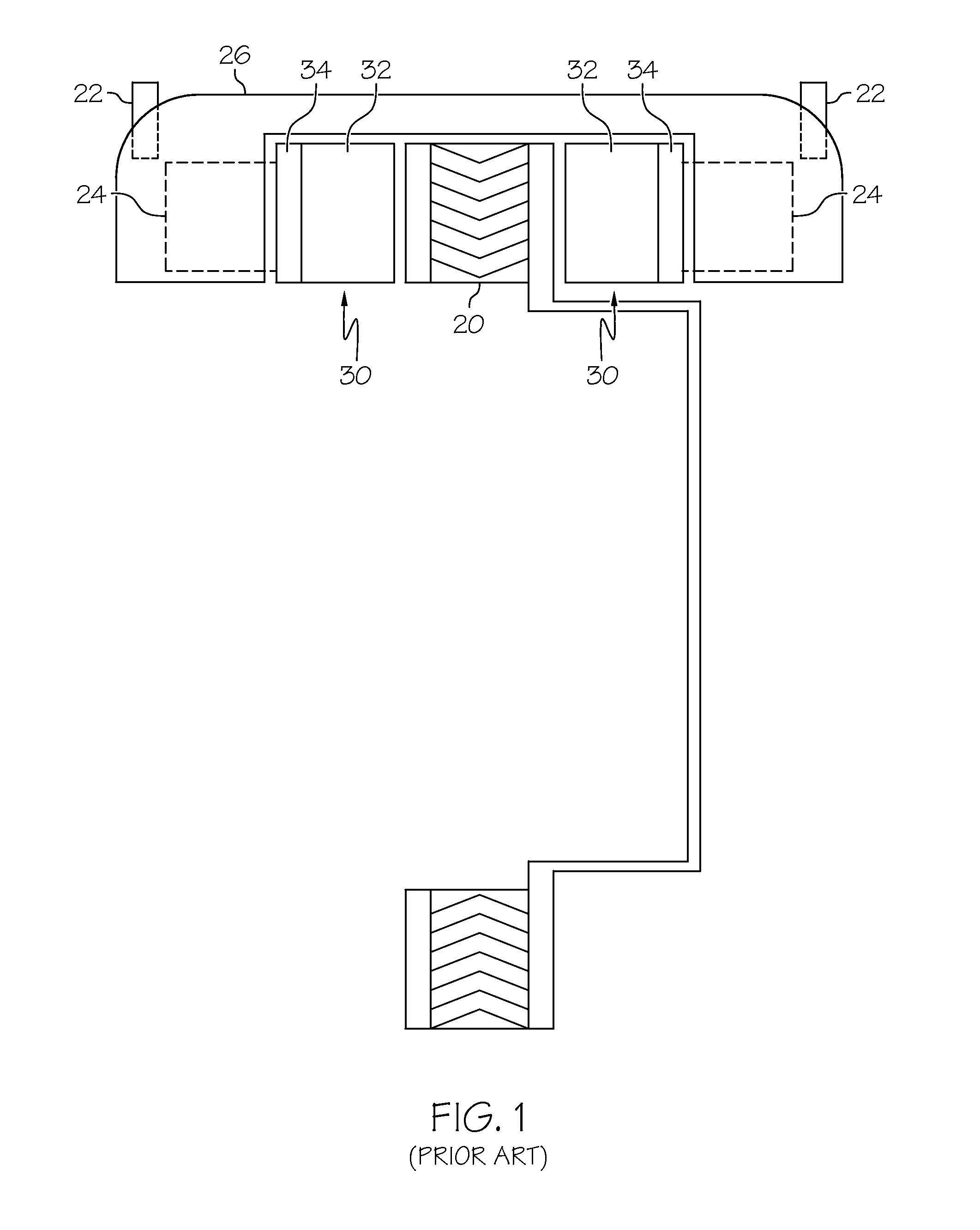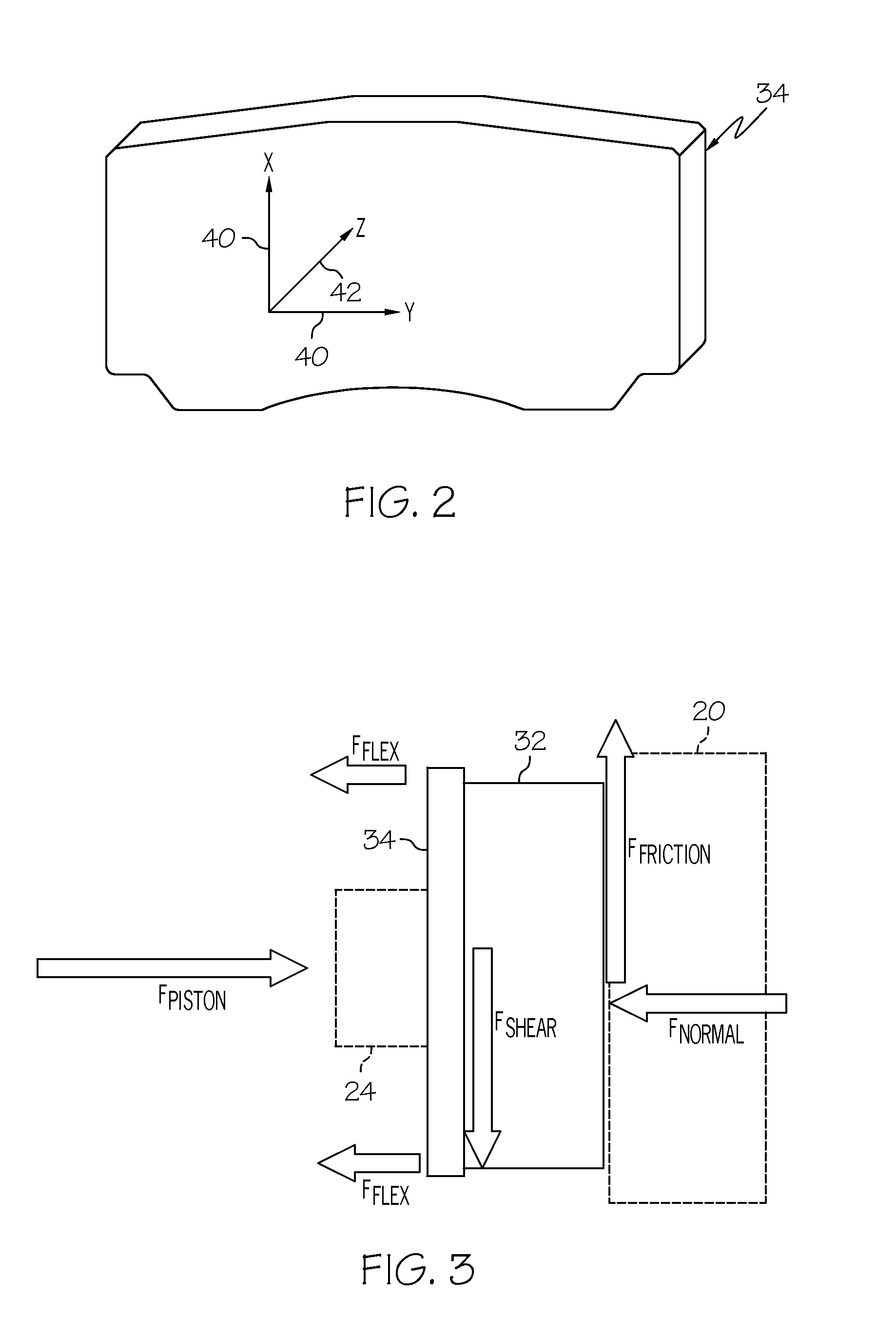Carbon fiber reinforced carbon matrix composite for brake pad back plate
a technology of carbon fiber reinforced carbon matrix and brake pad back plate, which is applied in the field of brake pad assembly improvement, can solve the problems of loss of weight that is most susceptible, and loss of deceleration ability
- Summary
- Abstract
- Description
- Claims
- Application Information
AI Technical Summary
Benefits of technology
Problems solved by technology
Method used
Image
Examples
example 1
[0079]The herein described example brake pad assembly was manufactured (see FIG. 6) in accordance with an automotive racing application in mind. The particular racing application experiences relatively high speeds and requires aggressive deceleration. Therefore, the properties desired of the brake pad in this application generally include: high coefficient of friction, good wear resistance, high-temperature frictional stability, low mass, ability to withstand the forces induced under braking, ability to resist thermal degradation at elevated temperatures, and preferential conduction of heat away from the caliper pistons. The example method steps are illustrated in FIG. 6 in process flowchart 600 that begins at 601. A simulation of these conditions was tested on an inertia brake dynamometer with the parameters as described in Table 4 and test results provided in Table 5, and FIG. 9.
TABLE 4ItemTesting ConditionTesting MethodDeceleration test under constant deceleration rateInertial Ma...
example 2
[0095]Similar to Example 1, the herein described brake pad of Example 2 was manufactured (see FIG. 6) in accordance with an automotive racing application in mind and was designed for enhanced durability. Therefore, the same requirements and desired properties of Example 1 are realized in this example. The manufacturing steps are illustrated in FIG. 6 in process flow chart 600 that begins with 601. The brake pads embodying Example 2 were tested on an inertia brake dynamometer with the parameters described in Table 6.
TABLE 6ItemTesting ConditionTesting MethodDeceleration test under constant deceleration rateInertial Mass 43.376 slug-ft2Rolling Radius 13.750 in.Brake RotorGrey Cast Iron, Brembo 099229.10Brake Pad ShapeHawk Performance HB109Brake Pad Area12.4261 in2Caliper TypeAP opposing 6-piston CP5810-5S0MPiston Area per side 4.295 in2Effective Radius 5.322 in.Initial Velocity 1830 rpm (simulated 150 mph)Final Velocity 1100 rpm (simulated 90 mph)Brake Initiation Temp.900° F.Deceler...
PUM
| Property | Measurement | Unit |
|---|---|---|
| Power | aaaaa | aaaaa |
| Power | aaaaa | aaaaa |
| Power | aaaaa | aaaaa |
Abstract
Description
Claims
Application Information
 Login to View More
Login to View More - R&D
- Intellectual Property
- Life Sciences
- Materials
- Tech Scout
- Unparalleled Data Quality
- Higher Quality Content
- 60% Fewer Hallucinations
Browse by: Latest US Patents, China's latest patents, Technical Efficacy Thesaurus, Application Domain, Technology Topic, Popular Technical Reports.
© 2025 PatSnap. All rights reserved.Legal|Privacy policy|Modern Slavery Act Transparency Statement|Sitemap|About US| Contact US: help@patsnap.com



